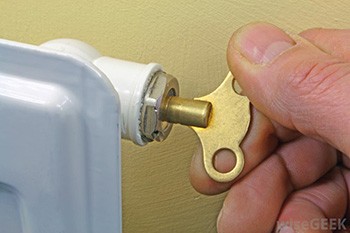

Bleeding your radiators is a good habit to get into. This very simple operation is essential to evacuate air bubbles and sludge that can prevent your heating system working properly.

Turn off the heating. Before you begin, turn off your heating system’s circulation pump. The easiest way is to set your boiler to the "summer" position. Wait until the radiators are cold.
| Warning: if you only bleed the radiators on the top floor (where the air is most likely to accumulate), they may re-fill with air as soon as you turn the circulation pump back on, drawing the air up from the lower floors |
When bleeding your radiator(s), you may have lowered the pressure within the circuit. You can build it back up again by adding water via the filling valve.This is generally underneath or very near the boiler.
If in doubt, contact your heating engineer.
The fact that air bubbles can get trapped in your heating system is not surprising. However, you may be surprised to learn that sludge can also clog the pipes.
In fact, it is not really what is normally understood as sludge. Because it circulates around a closed circuit, the heating water oxidises the metal of the pipes. As it passes through, it carries away the metal oxides, which become detached from the pipes. This gives the water the brownish colour, thick texture and unpleasant odour that give it the appearance of sludge.
Subscribe to our newsletter and stay informed about energyfacts.